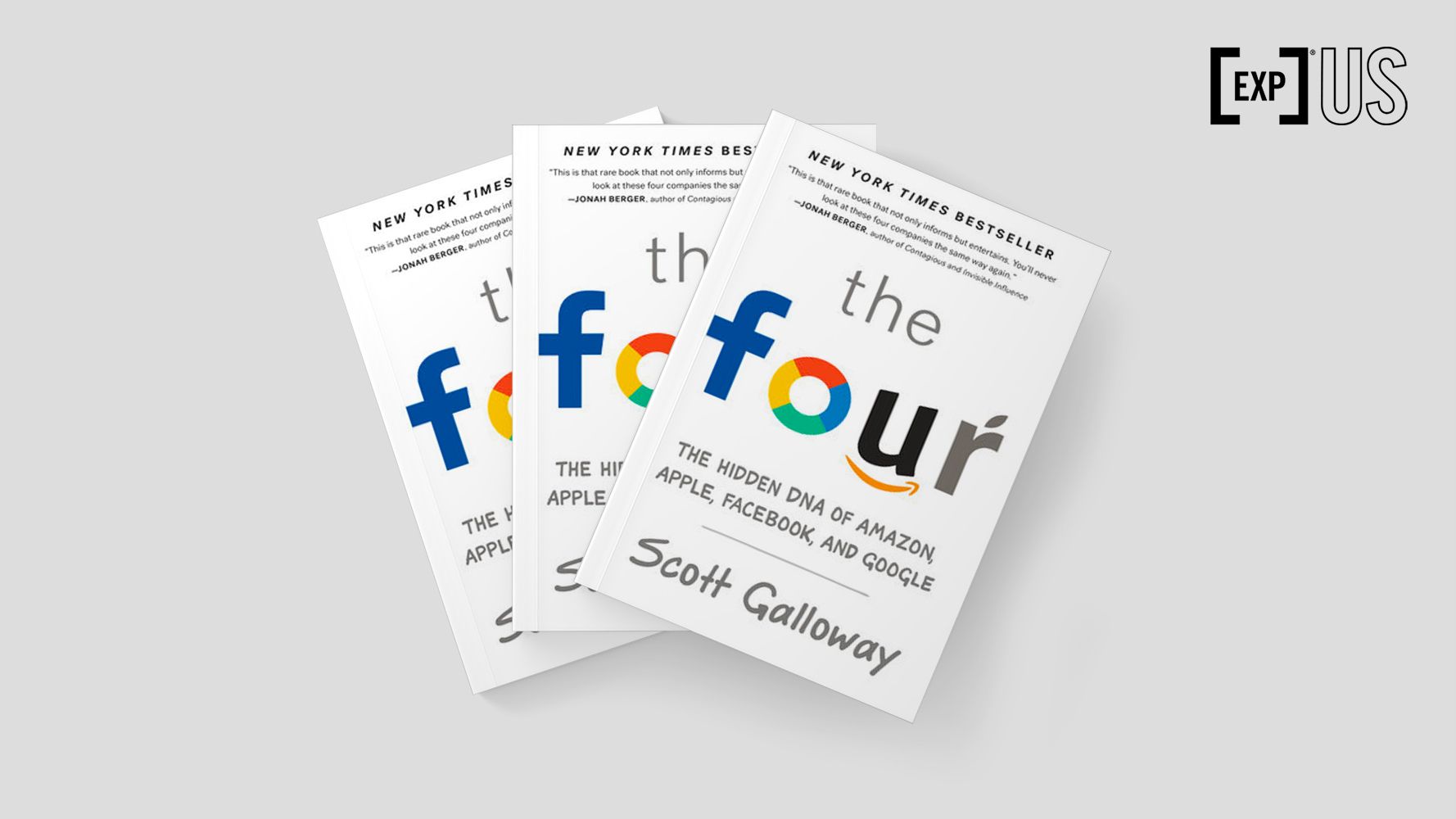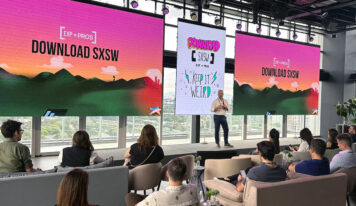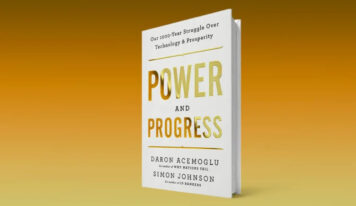Author Scott Galloway uses the metaphor of the human body to explain the reasons for the success of the tech giants that are dominating the world
Central Ideas:
1 – The metaphor of the human body (brain, heart, sexual organs) has a direct relationship to the success of the Four Horsemen. Google is meant for the brain. Amazon is a bridge between the brain and our hunter-gatherer instinct. Facebook addresses the heart. Apple has no direct sex appeal, but its products make it more charming and more sexually appealing.
2 – To become a really big and expressive company, you will need a product that can jump geographical boundaries and attract people on a global scale.
3 – Alibaba, with its gigantic scale, will have great difficulties if it wants to be a global player on the same level as the Four Horsemen. It will have to expand far beyond its local market and have a concrete commercial presence in the USA.
4 – Faced with the gigantism of the Four Horsemen, take care of yourself, of your career. Advice to young people: go to college. You might even learn something. Even without learning anything, the college name will be your biggest asset until you develop other assets, it will open doors for you.
5 – The Four X job capacity. An innovator of yesteryear, Unilever has a market capitalization of $156 billion, with a benefit to over 171,000 families. Compare that to Facebook, with a market capitalization of $448 billion and only 17,000 employees.
About the author:
Scott Galloway is a professor at New York University’s Stern School of Business, where he teaches brand strategy and marketing to MBA graduates. A serial entrepreneur, he has founded nine companies, including L2, Red Envelope, and Prophet.
Preface (Ricardo Cavallini)
There are two ways to read this book. The first is to look at the four giants as success stories, which generate value per employee than traditional companies never dreamed of achieving. For this reading, Galloway points out the similarities of these four giants and what, in his view, a company should work on to become the fifth company in this group.
But the second, and perhaps most important, is to understand that it’s not just about being inspired by their success, understanding how they became giants, but how they are causing disruption in the present and shaping the future of business like never seen before.
When Facebook and Google broke down the barrier to marketing and access to customers, it opened up a universe of possibilities for businesses of all sizes and sizes. This is good news, especially for countries whose economy is a long tail and more than half of the formal jobs come from small and medium-sized companies.
But the change has a much greater impact than creating new opportunities. Examples abound. Forgetting the obviousness of the cell phone industry, Apple’s entry into this market has brought indirect and drastic consequences for a wide variety of segments. To give some examples, but not limited to telecom, games, newspapers, computers, music, cabs, photography, and hotels.

Chapter 1 – The Four
Amazon: everyone enjoys buying a Porsche Panamera Turbo S model sports car or a pair of Louboutin shoes. But it’s not so much fun to buy toothpaste and eco-friendly diapers anymore. Amazon, the online retailer of choice for most Americans and, increasingly, the world, reduces the hassle of getting the things we need to survive. Everything is done with minimal effort: no hunting or gathering is required, and with (just) one click we supply all our needs. Amazon’s formula is based on unprecedented investment in “last mile” infrastructure, funded by investors who are generous to the point of irrationality. These retail investors are seduced by the simplest and most fascinating story ever told in the business world: The biggest store on the planet.
Apple: The Apple logo, which adorns the world’s most coveted laptops and mobile devices, is the global emblem of Western wealth, culture, and values. At its core, Apple satisfies two of our instinctive needs: to think we are closer to God and to be more attractive to the opposite sex. Apple’s congregation includes some of the most important people in the world: the innovation class. By achieving a paradoxical goal in the business world (a low-cost product sold at a premium price, Apple has become the most profitable company in history.
Facebook: If you look at adoption and usage metrics, Facebook is the biggest success in human history. The planet has 7.5 billion people and 1.2 billion of them use Facebook daily. Facebook (in 1st place), Facebook Messenger (in 2nd place), and Instagram (in 8th place) are the most popular mobile apps in the United States. A typical user spends 50 minutes a day on the company’s social network. People spend 1 minute on Facebook for every 6 minutes they spend on the Internet and every 5 minutes on mobile Internet.
Google: Google is the god of modern man. It is our source of knowledge, always present, knowing our innermost secrets, always reassuring us about where we are and where we need to go, answering all our questions, from the most trivial to the most profound. No institution has the trust and credibility earned by Google. About one out of every six questions asked on the search engine is new (no one has ever asked the question before).
The Four are in an epic race to become the operating system of our lives. And the prize is nothing less than a trillion-dollar sum and more power and influence than any other entity in history.

Chapter 2 – Amazon
Many good books have been written, including Brad Stone’s impressive The Everything Store, to tell the story of how a hedge fund analyst named Jeff Bezos and his wife drove across the country from New York to Seattle and hatched Amazon’s business plan on the road. Many authors argue that Amazon’s core assets are its enormous operational capacity, its programmers, or its brand. I, for my part, would argue that the real reasons why Amazon is managing to blow away the competition (while approaching a trillion-dollar valuation are others. Like the other Four, Amazon’s rise is based on the company’s appeal to our instincts. The other driver of the company’s success is a simple and clear story that enabled it to raise and spend, staggering capital.
Retail was more a product of Jeff Bezos than Jeff Bezos was a product of retail. In each of the preceding eras of retail, brilliant people benefited from a change in demographic factors or consumer preferences and created billions of dollars in value. But Bezos saw a technological shift and used it to rebuild the retail world from end to end. E-commerce would never be what it is today if Bezos had not contributed his vision and focus.
To leave competitors behind and reinforce the core value of the selection, Amazon launched Amazon Marketplace, leaving it to others to fill the long tail. Sellers gained access to e-commerce’s largest platform and customer base, and Amazon was able to expand its offerings without incurring the expense of holding additional inventory. Today, Amazon Marketplace accounts for $40 billion, or 40%, of Amazon’s sales. The sellers, satisfied with the gigantic customer flow, feel no need to invest in their own retail channels.
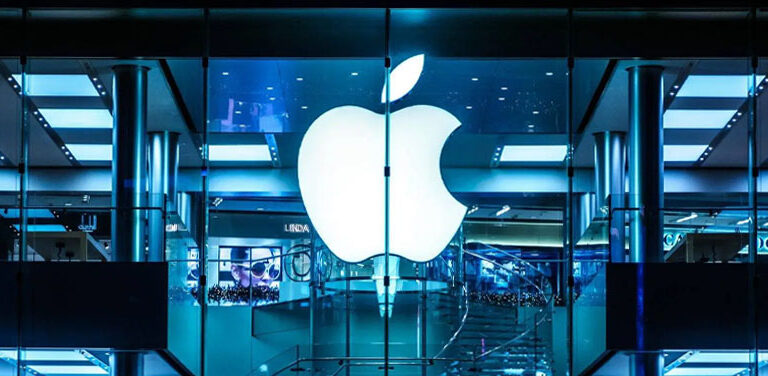
Chapter 3 – Apple
Objects in general are considered sacred if they are used for spiritual purposes, such as the worship of gods. Steve Jobs became the Jesus of the innovation economy and his shiny achievement, the iPhone, became a symbol of his worship, positioned above other material objects or technologies.
In the first decade of the 21st century, after Jobs returned to Apple, the company embarked on the greatest period of innovation in corporate history. In ten years, Apple launched, one after the other, a new category-creating and $100 billion revolutionary product or service: iPod, iTunes, Apple Store, iPhone, and iPad… there has never been anything like it.
Despite all that Jobs did for Apple, he was also a destructive force in the company. He bullied employees, showed little interest in philanthropy and minority inclusion, and his whims and megalomania kept Apple on the brink of chaos. His death put an end to the company’s historic period of innovation, but also allowed Apple, under Tim Cook, to turn to predictability, profitability, and scale.
The Macintosh, released in 1984, featured attractive desktop icons and a custom look geared to please the heart. Apple proved that a computer could also be friendly. The Macintosh could talk (the computer was famous for displaying the word “Hello” on the screen when turned on).
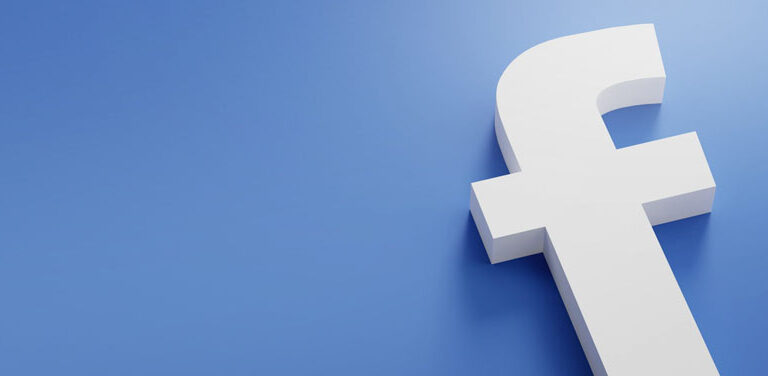
Chapter 4 – Facebook
Our planet has 1.4 billion Chinese, 1.3 billion Catholics, and 17 million people go to Disney World every year. Facebook, on the other hand, has a significant relationship with no less than 2 billion people.
It is quite true that soccer has 3.5 billion fans, but it has taken this beautiful game more than 150 years to conquer only half of the planet. Facebook and its other platforms are expected to surpass this milestone before its 29th birthday. The company owns three of the five platforms that have reached the 100 million users mark the fastest in history: Facebook, WhatsApp, and Instagram.
Seventy-five years and $20 million in research funding [Grant Study, Harvard Medical School] to come to the simple conclusion: “Love leads to happiness. Love is a function of the intimacy and depth of our relationships and the number of interactions we have with people. Facebook both exploits our need for these relationships and helps us cultivate them. There is something deeply satisfying about rediscovering an acquaintance from 20 years ago and being able to keep in touch with friends even after they have moved across the country.
Much of this innovation on the web comes for free. Facebook benefits from the best jiu-jitsu maneuver of all time: the company is likely to become the largest media company on the planet and it is the users who provide it with the content (more or less like Google). In other words, more than 1 billion customers work for Facebook without spending a dime. In comparison, the big entertainment companies need to spend billions to create original content.
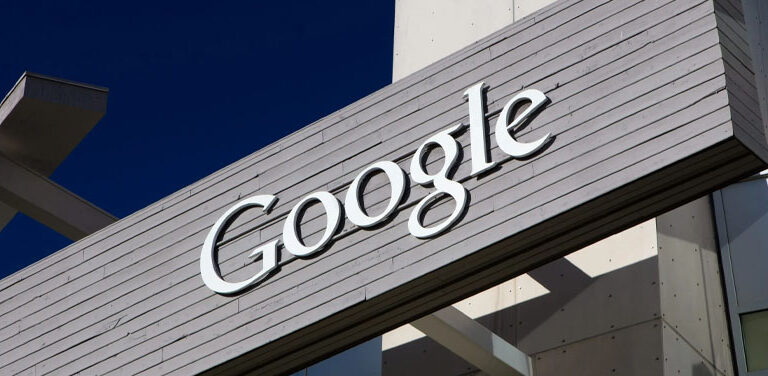
Chapter 5 – Google
Apple is considered the most innovative company in the world. Amazon is the most well-regarded (who knows what that means). Facebook is considered the best company to work for. But the trust we place in Google is unmatched.
Google reinforces its divine position by clearly showing which search results are organic and which are paid. This increases our confidence in the results, seemingly free from market forces. What happens is that Google’s scriptures, in the form of search results, represent for many an incomparable stream of veracity. And Google wins on both sides: organic search retains its neutrality, while paid content enables it to profit from ads. And nobody complains.
Google vs. the Washington Post. Several years went by before a tech-savvy CEO took the helm of a struggling newspaper. In 2013, Jeff Bezos bought the WashingtonPost. The acquisition had the salutary effect of eliminating quarterly angst, when the newspaper would reveal free-falling results to investors, soon followed by the inevitable bloodletting in the newsroom. More than providing financial ballast, Bezos directed the Post to the Internet with everything. The paper’s online traffic doubled in just three years, quickly overtaking the Times.
Google is not Microsoft…yet. The search company still boasts that it has the best talent in history. Google employees not only know that they are better than others…they are in fact better than others. Everyone knows that the company expects employees to devote 10% of their time to coming up with new ideas. And the 60,000 geniuses that work at Google are turned into a veritable factory of interesting ideas.

Chapter 6 – Trick me
The pioneers of the industry often end up with arrows in their backs, while the Knights that come later (Facebook after Myspace, Apple after the first PC manufacturers, Google after the first search engines, Amazon after the first online retailers), feed off the carcass of their predecessors, learning from their mistakes, buying the assets, and winning over their customers. The sins of the Knights fall into one of two types of cheating:
Cheat #1: Steal and protect. Large companies often rely on some kind of lying or intellectual property theft to accumulate value at unimaginable speed and scale, and the Four is no different. Most Knights have promoted some kind of lie to deceive other companies, or the government, and induce them to make available some subsidy or transfer of value that in the end dramatically tilts the balance of power to their side. (Follow Tesla’s fight in the coming years for government subsidies to make solar and electric-powered cars.) When they become knights, however, they suddenly become outraged by this kind of behavior and do everything they can to protect their gains.
Cheat #2: We’re not stealing, just borrowing. The second form of cheating is widely used by the Four: “borrowing” users’ information later to sell it back to them. Google is a good example of this.
Google was created based on mathematical insights about the structure of the web and the nature of searches but became a knight based on the founders’ (and Eric Schmidt’s) insight that information can be distributed for free with one hand and become very profitable with the other.
Both Facebook and Google declared earlier in the decade that they would not share information across company silos (from Facebook to Instagram, from Google to Gmail to YouTube and DoubleClick). However, both riders lied and sneakily changed their privacy policies, demanding a specific opt-out request if you don’t want them to cross-reference your activities with your location and your searches. Nothing indicates that these companies have any intention other than to use the data to do better marketing targeting.
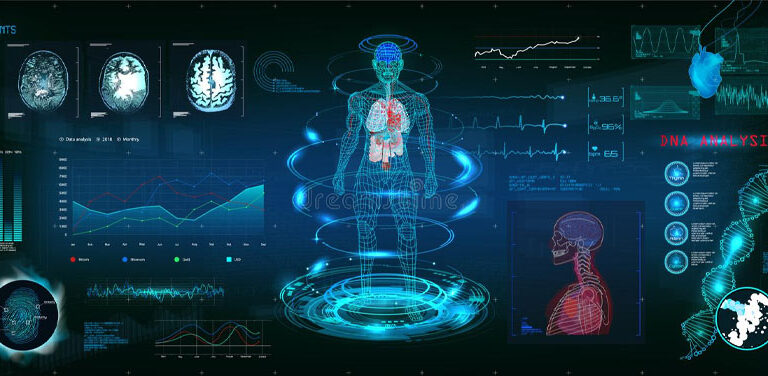
Chapter 7 – The Human Body Metaphor in Business
From the point of view of evolutionary psychology, all successful businesses appeal to one of the three regions of the body: the brain, the heart, or the sexual organs. They all appeal to some aspect of survival. For any corporate leader, knowing which domain to turn to (i.e. which organ to satisfy) should guide your business strategy and your company’s results.
Gray matter. The brain is a calculating and rational organ. Doing what needs to be done weighs costs and benefits, calculated in milliseconds. When we are shopping, the brain compares prices and steps on the brakes with enormous speed.
Few companies turn to the brain of their customers, create an appeal to our rational side, and manage to emerge victorious. A good example is Walmart. Millions of consumers evaluate their options and decide to shop at their stores. “More for less” was for a long time an excellent value proposition.
The big heart. The heart represents a vast market. After all, most of our actions, including our purchases, are based on emotions. It’s easier, and more fun, than resorting to the predictable cost-benefit analysis of the heart-brain, whose answer to “Should I buy this?” is usually “No.” The heart is driven by the greatest force in history: love.
Erogenous zone. With the increasing difficulty of appealing to the heart, the brands that address the sexual organs are going from strength to strength. These organs guide our desire and our insatiable instinct for procreation. After survival, nothing motivates us more than sex.
The metaphor of the body (brain, heart, and sexual organs) has a direct relationship with the extraordinary success of the Four Horsemen. Let’s take the example of Google. Google addresses the brain and complements it, expanding its memory almost to infinity.
If Google represents the brain, Amazon is a bridge between the brain and our hunter-gatherer instinct set up to acquire more stuff. Facebook, on the other hand, addresses our hearts. It is the fabric that binds the world together: a combination of our behavioral data and advertising revenue that can speak louder than a giant like Google.
Apple’s marketing and promotion have never had a sex appeal. The message is not that having an Apple product will make us more attractive to the opposite sex (or the same sex). But (which is common with the best luxury brands) the message is that the products will make you better than your sexual competitors: sleeker, smarter, richer, and more exciting.

Chapter 8 – The T Algorithm
The Four have eight factors in common: product differentiation, “visionary capital,” global reach, charisma, vertical integration, artificial intelligence, career acceleration, and geographic advantage. These factors make up a kind of algorithm, rules that define what it takes to become a trillion-dollar company. In our work at L2, we use the term “T Algorithm” to help companies better allocate their capital.
Let’s look at the details of some of the factors:
Global reach. One factor of Algorithm T is the ability to go global. To become a truly large and expressive company, you will need a product that can leap geographical boundaries and appeal to people on a global scale. It’s not just the bigger market, but the diversity (especially the ability to exploit countercyclical markets capable of surviving regional crises) that investors want, and if you give them that, they will reward you with cheaper capital.
Artificial Intelligence. Another factor in Algorithm T is the company’s access to data and ease of data processing. A trillion-dollar company needs to have technology that can learn from data entered by humans and record it algorithmically (the true Himalayas of data that can be processed by algorithms to improve offerings).
Geographic advantage. A geographic location makes a big difference. There are rare companies (or none) that have aggregated tens of billions of dollars in the last decade that are not within a few miles of some excellent top-tier technical or engineering university. RIM and Nokia were the pride of their respective countries and were located in close proximity to the best colleges in the country. Three of the Four Horsemen (Apple, Facebook, and Google) have excellent relationships with a top engineering universities: Stanford, and UC Berkeley. Amazon has connections with the University of Washington. High quality.

Chapter 9 – The Fifth Horseman
We can apply our checklist of knight characteristics to a number of booming companies that have the potential to become the fifth tech giant, which would not necessarily come from a clearly digital sector.
Alibaba – In April 2016, an e-commerce company overtook Walmart to become the largest retailer in the world. It was only a matter of time, and it wasn’t Amazon that dethroned the Bentonville giant, but Jack Ma’s Chinese powerhouse, Alibaba. Justice is done, this part happened because of Alibaba’s business model, which acts as a market space for other retailers (e-commerce and online shopping, online auctions, money transfers, cloud service).
Alibaba, with its gigantic scale, will face considerable difficulties if it has ambitions to be a global player in the digital age on the same level as the Four Horsemen. By definition, the company will have to expand far beyond its local market and have a concrete business presence in the US.
Tesla – History is littered with skeletons of entrepreneurs who dared to challenge the giants of the auto industry (and who even won movies, such as Francis Ford Coppola’s Tucker, a man, and a dream). But for now, everything indicates that a movie about Elon Musk would involve a stylish closet and Gwynet Paltrow at his side. Tesla faces its difficulties, but it has managed to go further than any other startup in the auto industry in this generation and looks well-positioned to lead the electric car market.
Microsoft – Microsoft is no longer the “beast from Redmond,” the company that completely dominated the PC era. But Windows is the operating system on 90% of the world’s desktops. The office remains the world’s most popular suite of productivity programs and products, such as SQL Server and Visual Studio, are virtually ubiquitous. LinkedIn also has an enviable competitive position.

Chapter 10 – The Four and You
On average, smart people who work hard and treat others well are more successful than people who are fuzzy-thinking, lazy, or nasty to their colleagues.
Nothing is more important than emotional maturity, especially for young people in their 20s when this quality can vary greatly. Increasingly rare are fields in which a person answers to a single boss and works with a specific group of tasks that don’t change much, or often. By comparison, the digital age worker will have to answer to multiple stakeholders and perform different functions in the course of a day, in an environment that fosters maturity. Young people who have a developed identity, know how to maintain control under stressful conditions, and are able to learn and apply what they learn will be more successful than their peers who lose control easily.
Go to college. If you want to be a success in the digital age, nothing speaks louder than a degree from a prestigious university. And it makes a difference if you graduate with honors. Go to college… you might even learn something. But even if you learn nothing, the name of a college engraved on your forehead will be your greatest asset until you develop your own assets, and it will open many doors for you. We all need selection mechanisms and simple rules to make our choices, and it is very easy to think “Yale = smart; Nowhere University = not so smart.”

Chapter 11 – The World after the Knights
Together, the Knights employ about 418,000 people (the population of Minneapolis). If we add up the publicly sold shares of the Four Horsemen, their value comes to $2.3 trillion. This means that our version 2.0 of the city of Minneapolis on the banks of the Mississippi contains almost the same wealth as the gross domestic product of France, a developed nation with 67 million citizens. This wealthy city will prosper, while the rest will have to scramble for investment, opportunities, and jobs.
This reckoning is already happening, right now. This distortion is created by the constant advancement of digital technology, the dominance of the Four, and the belief that “innovators” deserve an exponentially better life than mere mortals.
The heroes and innovators of old generated, and still generate, jobs for hundreds of thousands of people. Unilever has a market capitalization of $156 billion, distributed among more than 171,000 middle-class families. Intel has a market capitalization of $165 billion and employs 107,000 people. Compare this with Facebook, which has a market capitalization of $448 billion and only 17,000 employees.
It may be futile, or just plain wrong, to fight against or label these amazing companies as “evil” or “wicked”. I can’t say. But I am sure that understanding how the Four works gives us a better idea of our digital age and we become better able to ensure financial security for ourselves and our families. I hope this book will help you do that.

FACTSHEET:
Title: The Four – The Hidden DNA of Amazon, Apple, Facebook and Google
Author: Scott Galloway
Review: Rogério H. Jonck
![[Experience Club] US [Experience Club] US](https://experienceclubus.com/wp-content/uploads/2021/03/laksdh.png)









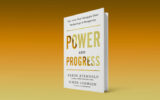
![[Experience Club] US [Experience Club] US](https://experienceclubus.com/wp-content/uploads/2021/03/logos_EXP_US-3.png)


